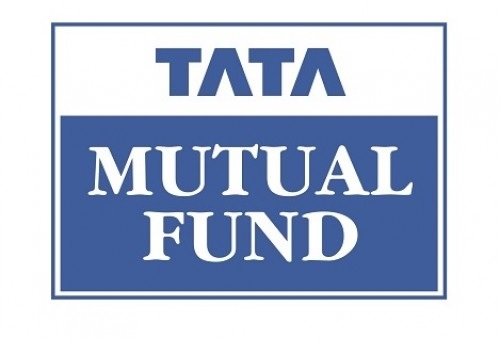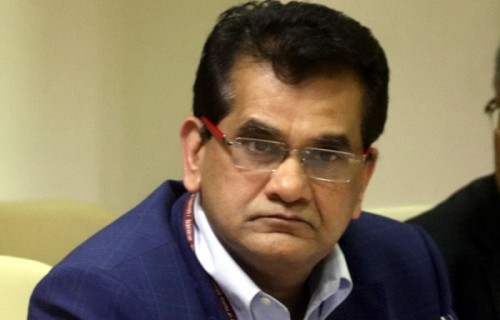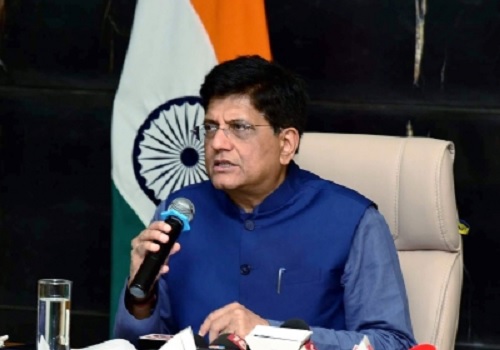Entering Economic Youth Phase @75 By Tata Mutual Fund

Follow us Now on Telegram ! Get daily 10 - 12 important updates on Business, Finance and Investment. Join our Telegram Channel
https://t.me/InvestmentGuruIndiacom
Download Telegram App before Joining the Channel
Entering Economic Youth Phase @75
As India enters its 75th year of independence, it's time to reflect on country's age not only as a number but also from the perspective of outlook for economic growth, policy reforms and capital markets. As the country ages and the demographic dividend matures, the economic outlook has ironically got younger for India especially in the last couple of years. This has been a result of combination of factors ranging from geopolitics, policy, and global trends of digitisation & low interest rates. Though the progress on each of these factors, the interplay between them and most crucially, India's ability to capitalise on some of these global trends can differ, the opportunity is unmistakeable.
But first, here are the 7 drivers of India's economic youth.
I. Investment cycle revival is critical if India must sustain GDP growth of 7%+ for multi-year periods. It is difficult to sustain high growth rates purely based on consumption and the so called demographic divided. In that context, the correction in the corporate balance sheets and a recovered banking system (from the corporate bad loan cycle) sets the stage for a recovery in the credit and investment cycle. Improved paybacks in capital intensive sectors like commodities will help too as corporates are beginning to announce capacity expansions in cement, metals, and renewables apart from the refresh capex of automation and digitisation sweeping the manufacturing and services sector. Private capital expenditure revival can supplement government expenditure (which has been bearing the entire burden of investment cycle for the last decade) which too has received a shot in the arm through counter-cyclical fiscal policy
II. India missed the export led manufacturing boom led by China and the other Asian countries. It is getting a second chance to capture some market share of this opportunity, thanks to China +1 and Covid led change in geopolitical dynamics. While traditional exports like software services, pharma and chemicals have grown form strength to strength, the present scenario presents an opportunity to repeat the same in other sectors, albeit at a smaller scale to start with.
III. Government has been proactive to capture the opportunity with the onset of PLI scheme which promotes large scale capacity creation – a far cry from the earlier incentives that encouraged moderate or sub-scaled capacities. While a large part of the initial investment is likely to be in downstream, last mile manufacturing (like assembly lines for electronics), scale production will indirectly lead to upstream investments in supply chain and components. Of course more needs to be done in terms of ease of doing business and reducing the regulatory cholesterol but the opportunity presented today has induced a sense of urgency
IV. Second generation reforms and deregulation in power, agriculture and banking is afoot. While power and agriculture are large segments of the economy and have suffered from misallocation of capital and political interference, the reform steps will have to keep pace with the rest of the deregulated economy. Meanwhile, banking and credit has got dominated by large private sector banks which needs to be broadened to support GDP growth of 7%+.
V. As for privatisation of PSUs, better late than never. After the initial burst of privatisation in 2003-04, government stake sales have been more in the nature of divestment through offer for sale (OFS) route and it is after a long gap that strategic sale is being pursued. While PSUs which are left on the block are somewhat P&L challenged or ESG challenged, privatisation or monetisation of assets which is now underway in full swing is critical for productive capital allocation of government's constrained resources.
VI. India is benefiting from the global capital flows especially in the digital economy and ecommerce. The trend is likely to continue thanks to cheap global capital. Bottomline is that world is ageing faster, and global risk capital will chase last remaining bastions of relative growth. India is therefore in a sweet spot. This is evident in the new age digital businesses recently even though they come with only a "long-term" promise of profitability and that too with widely differing views on their success probabilities. However, entrepreneurs need to capitalise on the same i.e. use this capital to create jobs in the medium term and hopefully convert it into large profitable businesses in the long term
VII. To be young is exciting but "to get rich is glorious" – the second part is a famous quote attributed to Deng Xiaoping from the early 1980s China. While liberalisation starting in 1991 changed the socialistic attitude of the policy making till then, it has been a gradual process since then and has been interspersed with periods of welfare spending. The flip side to this argument is growing wealth inequality but the benefits will still outweigh for India at the current per capita GDP level. India has the potential to be young and rich at the same time and there is a perceptible change in attitude towards businesses over the last few years – most notable example of that being the cut in corporate tax rates.
So, what does it all mean for the equity markets? Equity markets react to corporate profitability growth potential and cost of capital. On the growth front, the corporate profit growth (as indicated by Nifty50/BSE200) has been led by multiple sectors and the broad-based support has not been witnessed in the last many years. Infact, in last 5-7 years, analyst estimates for corporate profit growth for any particular year used to start with an estimate of 15-20% only to end the year with an underwhelming single digit growth as few sectors pulled down the overall performance.
Investment cycle recovery can not only add legs to profit recovery but also sustain it for longer. The previous instance of a booming investment cycle in FY07-08 led to profit after tax (PAT) of the listed companies at 6.3% of GDP in FY08 as compared to 3.0% in FY21 and around 4% projected in FY22 (taking Bloomberg Consensus growth for Nifty50 EPS as a proxy). While this does indicate that we are somewhere in the middle of earnings recovery cycle, traditional metrics like PAT as a % of GDP or market capitalisation as a % of GDP are also not able to capture the change that has transpired during the last few years. Listing of digital/ecommerce start-ups at significant market capitalisation which are not yet generating profits means one must be careful in using them to draw definitive conclusions – either for determining the upside or for calling out market peaks!
Lastly, there is the often heard and questioned disconnect between the real economy and capital markets. While there could be multiple reasons, it is primarily a function of two trends - (i) Organised corporate sector (represented by the listed universe) taking market share form the informal/unorganised sector and (ii) lower cost of capital leading to higher equity valuations. While both the factors have gone in favour last few years, and can see minor setbacks going forward, the so-called disconnect must be viewed in the above context. Notwithstanding the likely consolidation in valuations (after the recent re-rating) and the need to manage risks at the portfolio and asset allocation level, equities can still deliver better returns than other asset classes especially if India delivers on the promise of its economic youth.
To Read Complete Report & Disclaimer Click Here
Above views are of the author and not of the website kindly read disclaimer










Top News

Industrial activities to gather further momentum on rise in government capital expenditure: ...
Tag News

Monthly Debt Market Update, September 2023: CareEdge Ratings







